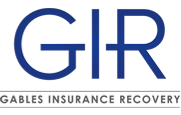What to Do If You Find Mold in Your Home
If you were to list potential threats to both your health and your home, chances are mold wouldn’t be anywhere near the top. But considering how common and dangerous mold actually is, perhaps it should be. Mold is no pesky cleaning problem. It has been known to cause serious illness ranging from allergic reactions and dermatitis to full-blown asthma attacks. Children, the elderly and those suffering from chronic diseases are especially susceptible to mold’s unhealthy effects. If you notice mold in your home, it requires immediate attention. The steps you take to eradicate existing mold and manage future outbreaks will protect not only your home but your health as well. Here is some key information for dealing with mold in your home.
How Does Mold Get into Your Home?
Like most microorganisms, mold spores are everywhere—including in your home—and are virtually impossible to get rid of completely. In most instances, this microscopic freeloading usually comes at no consequence to the homeowner. However, trouble starts when these spores are given sufficient amounts of moisture. Their favorite spots to fester indoors include naturally damp areas such as bathrooms, kitchens, laundry rooms, basements and crawlspaces. Because the spores cannot grow without moisture, reducing the dampness in your home is the number one way to combat mold growth. If you notice mold resulting from too much moisture in your home, try using a dehumidifier or adding insulation to cold surfaces to lessen dampness. It is also a good idea to keep doors between rooms open to increase air circulation and heat cold surfaces, which reduces condensation.
How Do You Clean It Up?
All the dehumidifiers and circulation in the world, however, will not help you deal with mold that’s already present. Once you have spotted mold in your home—maybe some of your items are discolored or look smudged and blotchy—or smelled its musty odor, it needs to be dealt with swiftly. The question is: Who is going to take care of the cleanup? The size and scope of the outbreak determines who does the dirty work. If the mold is isolated to a few spots in your shower or kitchen, then you can often take charge and clean it yourself. Routine maintenance with water and bleach—always wear proper gloves and eye protection—should take care of the problem. However, if the mold growth is too widespread or in hard-to-reach places like the back of wallpaper, drywall or underneath the carpet, we suggest hiring someone you trust to do the job for you. When it comes to protecting your home from mold, prevention really is the best way to go. If you can control the amount of moisture in your home, then you can control the amount of mold in your home. It is important to be aware that there is frequently a $10,000 limit on mold in many homeowner policies. Gables Insurance Recovery is available to examine your policy in light of these limits, which can be an unwelcomed surprise in the event of a loss. If you have mold in your home and would like to file an insurance claim but have some questions, feel free to contact us today. We would be more than happy to walk you through the process.

Leave a Comment